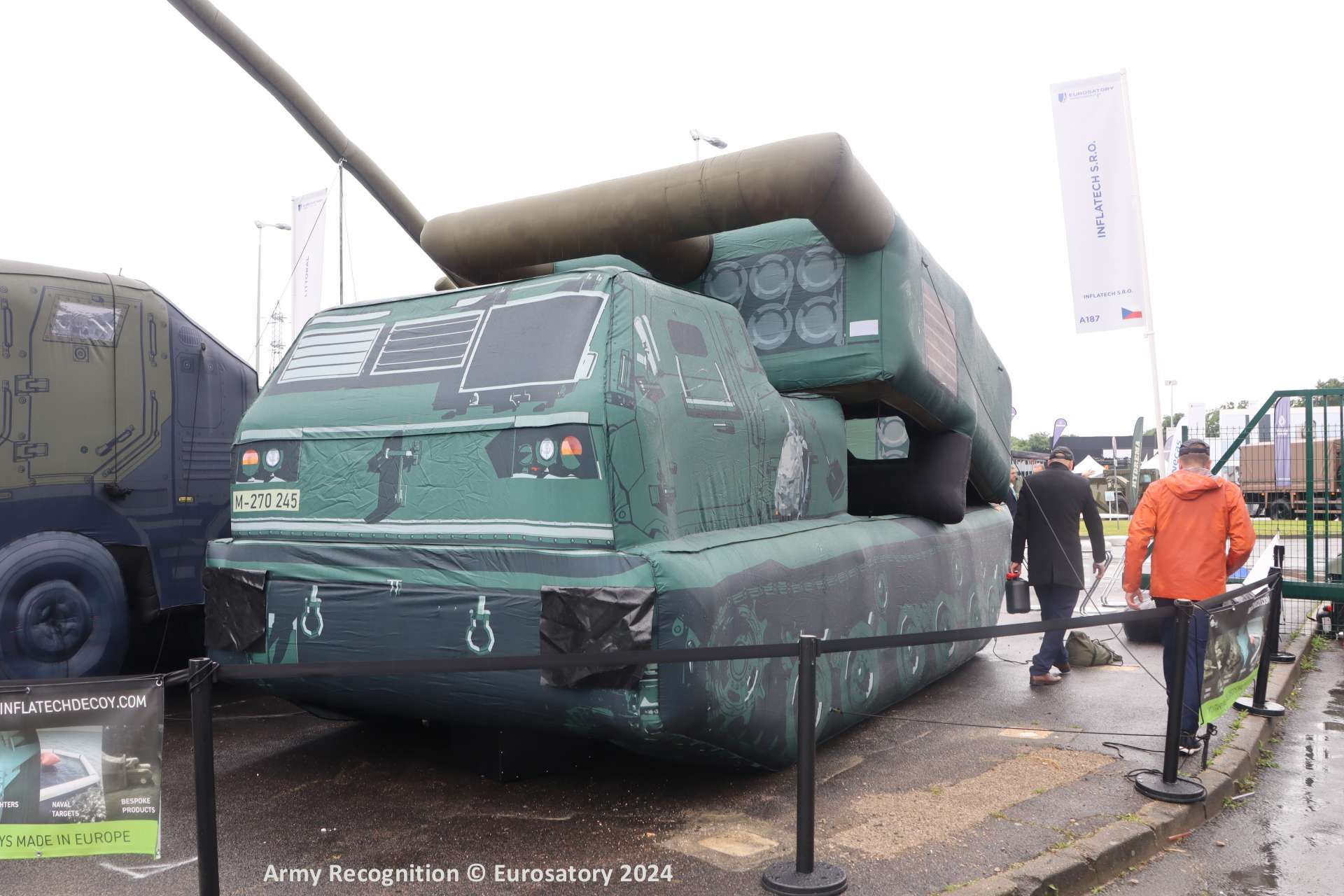Breaking News
Czech-made M270 MLRS inflatable decoy from Inflatech tricks Russian strike forces in Ukraine.
As reported by Praise the Steph on August 18, 2024, Russian forces tracked a Ukrainian M270 Multiple Launch Rocket System (MLRS) after it fired a salvo of Guided Multiple Launch Rocket System (GMLRS) missiles. After losing sight of the actual vehicle, Russian forces identified what they believed to be the M270 a few kilometers away from the firing position. However, this was an inflatable decoy, made by the Czech company Inflatech, designed to closely resemble the M270.
Follow Army Recognition on Google News at this link

After losing sight of the actual vehicle, Russian forces identified what they believed to be the M270 a few kilometers away from the firing position. However, this was an inflatable decoy, made by the Czech company Inflatech, designed to closely resemble the M270. (Picture source: Twitter/Praise The Steph)
Despite drone footage apparently showing the inflatable rail above the cabin of the decoy, Russian forces failed to detect the ruse and called in an Iskander-M strike, which reportedly occurred south of Chervona Dibrova in Sumy Oblast, Ukraine. As a result, a $3 million missile was expended on the decoy, which was made primarily of plastic. This incident highlights the effectiveness of military decoys, particularly those produced by Inflatech s.r.o., a Czech company established in 2014. At the Eurosatory 2024 exhibition, Inflatech displayed its inflatable self-propelled military decoys, designed to replicate various types of military equipment, including the M270. These decoys serve both training and operational purposes in modern military contexts.
Inflatech's self-propelled decoys are mounted on small, tracked platforms that can be controlled via radio or GPS, allowing them to realistically mimic enemy vehicles. These decoys feature infrared (IR) signatures and radar cross-sections that enhance their effectiveness in training environments and combat scenarios, where they can mislead enemy forces. The decoys are designed for quick setup, providing an alternative to using actual military vehicles.
The company's product range includes over 30 types of inflatable military decoys, such as tanks, armored vehicles, aircraft, and large weapon systems. Examples include U.S.-made High Mobility Artillery Rocket Systems (HIMARS) and tanks like the Abrams and Leopard 2A4. The range also covers infantry fighting vehicles (IFVs) such as the BMP-2, BMP-3, T-72, T-80, and T-90, as well as military trucks, launchers, radars, fighters, and naval targets. Additionally, Inflatech offers bespoke products tailored to meet specific client requirements.

Inflatech's self-propelled decoys are mounted on small, tracked platforms that can be controlled via radio or GPS, allowing them to realistically mimic enemy vehicles. (Picture source: Army Recognition)
Inflatech decoys are designed to be life-sized and realistically shaped for optical accuracy. The radar signature can be generated in just 90 seconds, achieving the desired radar cross-section. The integrated thermal signature management system ensures a multispectral copy of the desired infrared signature. Each decoy set includes the decoy, a user manual, engine options (diesel, petrol, or electric), various anchor types, frame tubes depending on the model, spare parts, and additional components. The packaging is lightweight and includes a backpack carrying option, allowing for setup in under 10 minutes by one person.
The production process at Inflatech involves sourcing materials from suppliers within the Czech Republic and the European Union. The workforce includes designers, technical supervisors, and seamstresses, and production utilizes an automated cutting machine with production software. Quality control measures, such as double pressure testing and visual inspections, ensure the reliability of the decoys. The company continually improves its products based on user feedback and battlefield testing.
Inflatech has presented its decoys at defense exhibitions such as Eurosatory and the World Defense Show, where they have been demonstrated to military leaders, defense contractors, and government representatives. The company is exploring new technologies to enhance the functionality and realism of its decoys to meet the evolving requirements of modern military forces, including those in Ukraine.


























